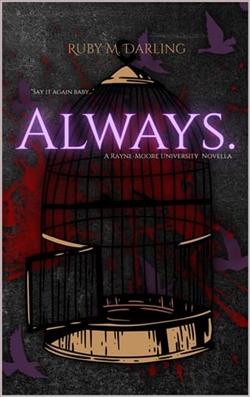Page 19 of The Cold Moon (Lincoln Rhyme 7)
He felt eager anticipation.
And guilt too.
Because he wouldn't be filled with this exhilaration if not for someone else's loss: the victim on the pier and Theodore Adams, their families and friends. Oh, he felt sympathy for their sorrow, sure. But he was able to wrap up the sense of tragedy and put it somewhere. Some people called him cold, insensitive, and he supposed he was. But those who excel in a field do so because a number of disparate traits happen to come together within them. And Rhyme's sharp mind and relentless drive and impatience happened to coincide with the emotional distance that is a necessary attribute of the best criminalists.
He was squinting, gazing at the boxes, when Ron Pulaski arrived. Rhyme had first met him when the young man had been on the force only a short time. Although that was a year earlier--and Pulaski was a family man with two children--Rhyme couldn't stop thinking of him as the "rookie." Some nicknames you just can't shake.
Rhyme announced, "I know Amelia has somebody in custody but in case it isn't the perp, I don't want to lose time." He turned to Pulaski. "Give me the lay of the land. First scene, the pier."
"All right," he began uneasily. "The pier is located approximately at Twenty-second Street in the Hudson River. It extends into the river fifty-two feet at a height of eighteen feet above the surface of the water. The murder--"
"So they've recovered the body?"
"I don't think so."
"Then you meant apparent murder?"
"Right. Yessir. The apparent murder occurred at the far end of the pier, that is, the west end, sometime between six last night and six this morning. The dock was closed then."
There was very little evidence: just the fingernail, probably a man's, the blood, which Mel Cooper tested and found to be human and type AB positive, which meant that both A and B antigens--proteins--were present in the victim's plasma, and neither anti-A nor anti-B antigens were. In addition a separate protein, Rh, was present. The combination of AB antigens and Rh positive made the victim's the third-rarest blood type, accounting for about 3.5 percent of the population. Further tests confirmed that the victim was a male.
In addition, they concluded that he was probably older and had coronary problems since he was taking an anticoagulant--a blood thinner. There were no traces of other drugs or indications of infection or disease in the blood.
There were no fingerprints, trace or footprints at the scene and no tire tread marks nearby, other than those left by employees' vehicles.
Sachs had collected a piece of the chain link and Cooper examined the cut edges, learning that the perp had used what seemed to be standard wire cutters to get through the fence. The team could match these marks with those made by a tool if they found one but there was no way to trace the cutter back to its source by the impressions alone.
Rhyme looked over the pictures of the scene, particularly the pattern the blood had made as it flowed onto the pier. He guessed that the victim had been hanging over the edge of the deck, at chest level, his fingers desperately wedged into the space between the planks. The fingernail marks showed that eventually he'd lost his grip. Rhyme wondered how long the vic had been able to hang on.
He nodded slowly. "Tell me about the next scene."
Pulaski replied, "All right, that homicide occurred in an alley off Cedar Street, near Broadway. This alley featured a dead end. It was fifteen feet wide and one hundred and four feet long and was surfaced with cobblestones."
The body, Rhyme recalled, was fifteen feet from the mouth of the alley.
"What's the time of death?"
"At least eight hours before he was found, the ME tour doc said. T
he body was frozen solid so it'll take a while to determine with any certainty." The young officer suffered from the habit of copspeak.
"Amelia told me about the service and fire doors in the alley. Did anybody ask what time they were locked for the night?"
"Three of the buildings're commercial. Two of them lock their service doors at eight thirty and one at ten. The other's a government administration building. That door's locked at six. There's a late-night garbage pickup at ten."
"Body discovered when?"
"Around seven A.M."
"Okay, the vic in the alley was dead at least eight hours, last door was locked at ten and garbage picked up then. So the killing took place between, say, ten fifteen and eleven P.M. Parking situation?"
"I got the license plates of every car in a two-block radius." Pulaski was holding up a Moby-Dick of a notebook.
"What the hell's that?"
"Oh, I wrote down notes about all the cars. Thought it might be helpful. You know, where they were parked, anything suspicious about them."
"Waste of time. We just needed the tag numbers for names and addresses," Rhyme explained. "To cross-check DMV with NCIC and the other databases. We don't care who needed bodywork or had bald tires or a crack pipe in the backseat. . . . Well, did you?"















